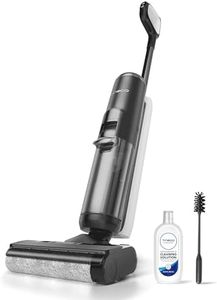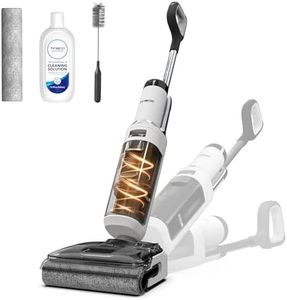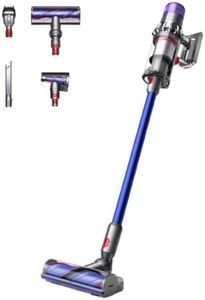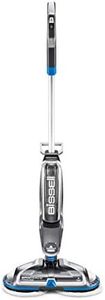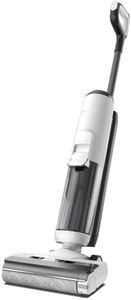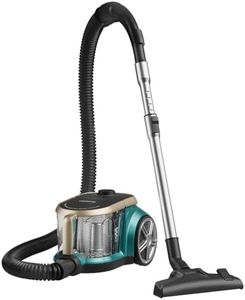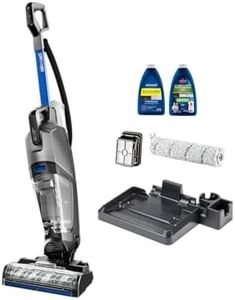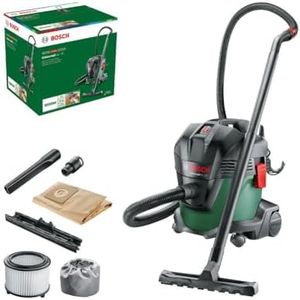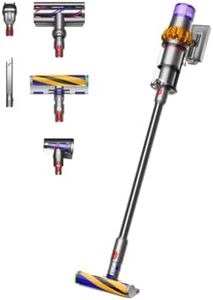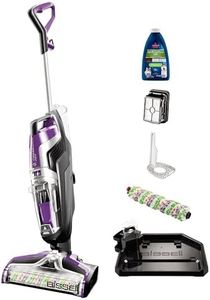We Use CookiesWe use cookies to enhance the security, performance,
functionality and for analytical and promotional activities. By continuing to browse this site you
are agreeing to our privacy policy
10 Best Hard Floor Vacuums
From leading brands and best sellers available on the web.Buying Guide for the Best Hard Floor Vacuums
Choosing a hard-floor vacuum can make a big difference in keeping your tile, hardwood, vinyl, or laminate floors looking their best. Unlike carpets, hard floors need vacuums that don't scratch, scatter debris, or leave streaks. When shopping, focus on features and specifications that address the particular needs of hard-floor cleaning. The right vacuum should be easy to handle, gentle on your surfaces, and effective at picking up both large and small particles. Understanding what each key specification means will help you identify the model that best matches your home's needs and your cleaning habits.Suction PowerSuction power refers to how strongly the vacuum can pull up debris and dirt. This is important for hard floors because you want it to be strong enough to pick up both fine dust and larger dirt without leaving anything behind. However, hard floors do not need excessively high suction as this can scatter debris rather than collect it. Light to mid-range suction is generally effective for hard floors, while higher suction might be necessary for homes with pets or lots of debris. Think about your floor type and dirt level: for mostly dust and crumbs, lower suction works fine; if you have kids or pets, a stronger suction will help with more challenging messes.
Floor Head DesignThe vacuum’s floor head, or cleaning nozzle, is the part that touches your floor. For hard floors, you want a head with soft bristles or no bristles at all to avoid scratching and scattering. Some vacuums have switches to adjust for different floor types; a hard-floor setting often means the bristles retract or soften. Wide heads let you cover more ground quickly but can be harder to maneuver around furniture. Pick a head that matches your space: if you have open areas, a broad head is good; for lots of tight spots and corners, smaller, more flexible heads are easier.
Filtration SystemFiltration is about how well the vacuum captures dust and fine particles. This matters if you have allergies or want to keep dust from circulating back into your home. Basic vacuums have standard filters that catch larger particles, while HEPA filters trap up to 99.97% of very tiny particles. If you’re sensitive to dust or have pets, a vacuum with a quality HEPA filter is a strong choice. For general cleaning and if you aren’t sensitive, standard filtration will often do the job.
Weight and ManeuverabilityA heavy vacuum can be tiring to use, especially on hard floors where you might need to clean frequently or carry between rooms. Lightweight vacuums are easier on your arms and better for quick or everyday use. If your home has multiple levels or you have limited strength, choose a lighter vacuum. Heavier models sometimes have bigger dustbins and more power, which can be useful in larger homes or for cleaning big messes, but most people find lightweight vacuums easier for hard floors.
Dustbin or Bag CapacityThis tells you how much dirt and debris the vacuum can hold before it needs emptying. A larger capacity means you can clean longer before stopping, which is handy in big homes. Smaller dustbins are fine for quick or small-space cleaning but might need more frequent emptying. Choose based on how much floor you clean at once: if you do the whole place in one go, a bigger dustbin is more convenient; for smaller jobs or daily touch-ups, a compact bin is usually enough.
Corded vs. CordlessCorded vacuums plug into the wall and offer unlimited run time, but the cord can be a hassle, especially in large rooms. Cordless vacuums run on batteries and are very convenient for quick, obstacle-free cleaning, but their run time is limited before needing a recharge. If you need to clean large areas or don't want to worry about charging, corded is better. If quick, grab-and-go cleaning or flexibility is more important, cordless is great—just check that the battery life meets your cleaning needs.
Noise LevelSome vacuums can be quite loud, which may not suit everyone or every time of day. If noise is a concern—perhaps you have kids, pets, or neighbors nearby—look for models that are marketed as quiet or have lower decibel ratings. For most households, a typical noise level is tolerable for regular cleaning, but you should consider your tolerance and environment.
